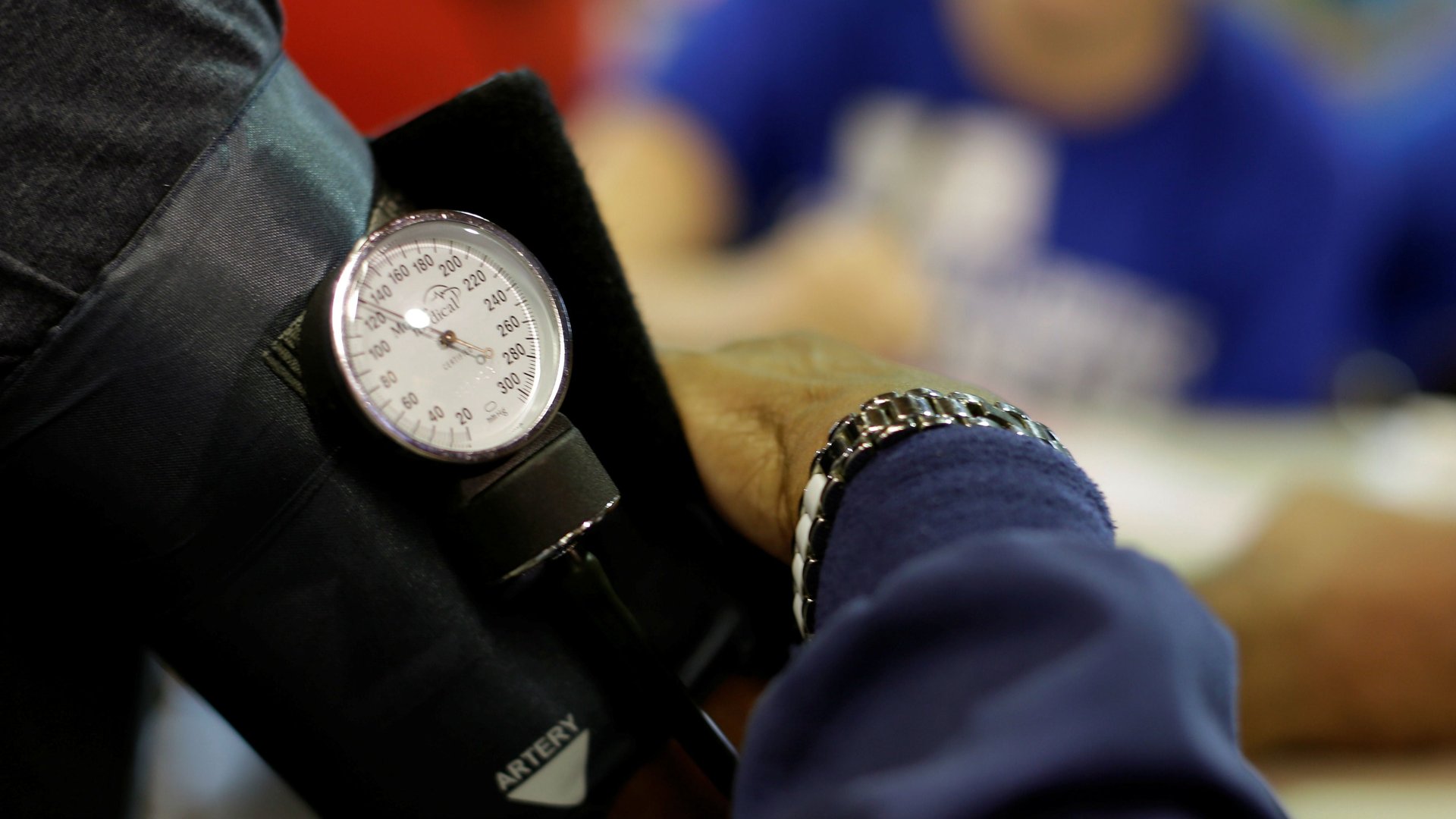If you didn’t have high blood pressure yesterday, you might today
Your blood pressure might be too high, but it has nothing to do with the state of the world today.


Your blood pressure might be too high, but it has nothing to do with the state of the world today.
On Nov. 13, a panel of leading health care associations, including the American Heart Association, published new criteria for classifying high blood pressure, the first such change since 2003. Instead of saying that a reading of 140/90 mmHg—i.e. the pressure in your vessels as the heart is pumping over the pressure between beats—high blood pressure will now be defined as 130/80. (Normal blood pressure is considered under 120/80.)
Previously, roughly 32% of Americans (73 million) were considered to have high blood pressure. Now that jumps to 46%, or 103 million people. The change doubles the number of women with high blood pressure and triples the number of men, according to the AP.
The new guidelines aren’t meant to suggest that anyone with newly-identified high blood pressure should start taking medication. Instead, they are intended to prevent people from waiting until their blood pressure is high to begin making lifestyle changes that could reduce their risk of heart attack.
“We’ve always recognized that there’s a progressive increase of risk as you get to higher pressures,” Paul Whelton, a physician and professor of public health at Tulane University, who led the panel, said in an accompanying video. “In the past, we had a category of ‘normal,’—that’s exactly the same as what we have today—and then we had a category called ‘prehypertension’ or ‘high-normal.'”
Whelton points out that these terms don’t actually communicate the risk of high blood pressure. ”Prehypertension” conveys the idea that your blood pressure is on the high side, but still normal. In reality, “you’re at double the risk for a heart attack compared to somebody with a normal pressure,” Whelton said.
The new guidelines zero in on three stages above normal, instead of the previous two: There is now “elevated” (up to 129/80), “stage one hypertension” (up to 130/80), and “stage two hypertension” (up to 140/90).
The guidelines result largely from a trial that involved more than 9,300 patients, aged 50-plus, who had either a higher risk for heart disease or already had kidney disease. The trial found that lowering blood pressure all the way to normal levels—rather than just keeping it under 140/90—significantly reduced (paywall) the risk of heart attacks, heart failure, and stroke.
To be sure, anyone’s risk of a heart attack depends on a variety of factors, including gender, ethnicity, smoking habits, diet, exercise, cholesterol levels, and blood pressure. But while blood pressure itself doesn’t cause death, it can lead to cardiovascular disease or diabetes without causing any symptoms; instead, it puts a stress on the heart that most people don’t notice. Over time, that stress wears down the organ.
In an email, physician Eric Topel, who is also founder and director of the Scripps Translational Science Institute in California, said the new guidelines are too general to be implemented for everyone. “There is likely no ‘magic’ optimal [blood pressure] range that is right for all people, which is the ill-conceived notion of issuing guidelines for all people,” he wrote.
Instead, Topel thinks that the best data available are meta-analyses, which evaluate all the existing studies on a given topic. Also on Nov. 13, researchers from Sweden published (paywall) a study in JAMA Internal Medicine concluding that high-blood-pressure treatments for people with upper-number measures of less than 140 were only neutral or “possibly beneficial,” rather than definitively risk-reducing.
To that end, most people with elevated blood pressure or stage-one hypertension should talk to their doctors about lifestyle interventions like quitting smoking, exercising more, or cutting back on drinking, versus seeking out a prescription. As former American College of Cardiology president Richard Chazal told the Washington Post (paywall), “An important cornerstone of these new guidelines is a strong emphasis on lifestyle changes as the first line of therapy.”